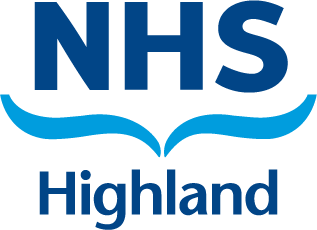Community Acquired Pneumonia (CAP) (Antimicrobial)

BTS 2009
BTS annotated Update 2015
NICE 191
During COVID-19 pandemic, please see separate antibiotic management document. Additional information for frail elderly patients is also available
COVID-19: Not all patients with COVID-19 pneumonia need antibiotics.
If secondary bacterial infection is suspected, treat as per guidance.
Duration
CURB65 = 0 to 1: 5 days. Review at 3 days and extend duration to 7 to 10 days if poor response.
CURB65 = 1 to 2: 7 days.
CURB65 = 3 to 5: 7 to 10 days (14 to 21 days if clinically indicated, 14 days if bacteraemia)
Antibiotic therapy in CAP is not dependent on CRP level
START ANTIBIOTICS IMMEDIATELY ONCE THE DIAGNOSIS HAS BEEN MADE
Assess severity using CURB65 score and markers of sepsis.
For CAP with features of SEPSIS, treat as CURB65 score 3 to 5
CURB65 score is defined by 1 point being scored for each of the following:
Confusion (mental test score 8 or less, new disorientation in person, time or place);
Urea >7mmol/L;
Respiratory rate ≥30/min;
Blood pressure (SBP <90mmHg, diastolic ≤60mmHg);
Age ≥65 years.
GPs without access to a recent blood urea level should use CRB65 score.
The CURB65 or CRB65 should be recorded in the patient’s medical notes.
CURB65 or CRB65 score identifies those patients that may safely be treated out of hospital. Social support and treatment compliance issues should be considered in addition to CURB/CRB65 score. The use of CURB65 can over-estimate the severity of illness in the frail patient. It is not appropriate to use CURB65 score to assess severity in a post-operative patient as these parameters may already be raised in the immediate post-operative period. There are a number of significant drug interactions with clarithromycin and levofloxacin, eg warfarin, theophylline; see the BNF for a comprehensive list. Both clarithromycin and levofloxacin can prolong the QT interval so use with caution in patients with an existing prolonged QT interval or on other drugs known to have this effect. See BNF for more detailed information. Clarithromycin is contra-indicated in patients taking simvastatin. If treatment with clarithromycin is necessary simvastatin should be temporarily discontinued and replaced with atorvastatin, up to a maximum of 20mg daily, for the duration of clarithromycin therapy. Levofloxacin can lower the seizure threshold and can cause tendon damage (including rupture) occurring within 48 hours of starting treatment or several months after stopping; avoid if there is a history of quinolone-associated tendon damage. The risk of tendon damage increases in patients over 60 years of age and in those taking concomitant steroids.
Consider early intravenous to oral switch with clinical improvement. Duration of therapy includes intravenous and oral treatment.
Remember the risk of tuberculosis, particularly in immunocompromised patients and in travellers or recent settlers from abroad.
For glossary of terms see Glossary.
Drug details
CAP with history of recent foreign travel (discuss with Microbiology/ID consultant, including options for penicillin allergy)
Oral/IV clarithromycin 500mg twice daily PLUS oral/IV amoxicillin 1g three times daily
5 days
CAP Mild (CURB65=0 to 1)
Mild to moderate: home or hospital-treated.
Known or suspected COVID-19 infection not requiring ventilation
Oral amoxicillin 1g 3 times daily OR oral doxycycline 200mg stat then 100mg once daily
5 days.
Review at day 3 - if poor response extend to 7 to 10 days.
If no response in 48 hours, ADD doxycycline to amoxicillin for atypical cover and consider admission.
CAP Moderate (CURB65=2)
Moderate: home or hospital-treated
Known or suspected COVID-19 infection not requiring ventilation
Oral/IV amoxicillin 1g 3 times daily PLUS oral doxycycline 100mg twice daily
7 days
CAP Moderate (CURB65=2)
Moderate: home or hospital-treated
Known or suspected COVID-19 infection not requiring ventilation
In suspected COVID-19 positive patient with recent course of amoxicillin PLUS doxycycline
Levofloxacin (rarely need for intravenous therapy due to excellent bioavailability) 500mg twice daily(see BNF warnings and MHRA Drug Safety Alert (updated 22 January 2024))
7 days
CAP Severe (CURB65=3 to 5) OR 0 to 2 with features of sepsis
Known/suspected COVID-19 patient requiring non-invasive ventilation
If no prior antibiotic treatment in the community
IV amoxicillin 1g 3 times daily PLUS oral doxycycline 100mg twice daily
7 to 10 days (14 to 21 days if clinically indicated, 14 days if bacteraemia)
CAP Severe (CURB65=3 to 5) OR 0 to 2 with features of sepsis
Known/suspected COVID-19 patient requiring non-invasive ventilation
If antibiotics given in the community before admission
Levofloxacin (rarely need for intravenous therapy due to excellent bioavailability) 500mg twice daily (see BNF warnings and MHRA Drug Safety Alert (updated 22 January 2024))
7 to 10 days (14 to 21 days if clinically indicated, 14 days if bacteraemia)
CAP Severe (CURB65=3 to 5) OR 0 to 2 with features of sepsis
Known/suspected COVID-19 patient requiring intubation.
If antibiotics given in the community before admission, in penicillin allergy or proven or suspected Legionella infection
Oral or IV levofloxacin 500mg twice daily (see BNF warnings and MHRA Drug Safety Alert (updated 22 January 2024))
7 to 10 days (14 to 21 days if clinically indicated, 14 days if bacteraemia)
CAP Severe (CURB65=3 to 5) OR 0 to 2 with features of sepsis
Known/suspected COVID-19 patient requiring intubation
In penicillin allergy AND levofloxacin not suitable:
Contact Microbiology/ID consultant
